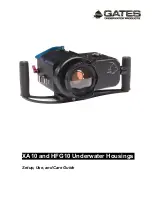
INSTALLATION GUIDE
IP-DECT Base Station and IP-DECT Gateway
Software
For information on how to update the software in the IPBS2/IPBS3, see the applicable Installation and
Operation Manual for the IPBS2/IPBS3.
Connectors
• Two 8-pin RJ45 modular jacks for LAN/PoE and powering
LEDs
The IPBS2/IPBS3 has one RGB LED to indicate status. This section describes the different indications and
when they shall be used. In the illustrations below: Each blink pattern is represented by a number of blocks
where each block is 100 ms. Light grey blocks means that the LED is off. Whenever the indication is
changed the new pattern always starts from the first block.
Idle/OK
Solid blue.
IPBS2/IPBS3 operational and no traffic on the
IPBS2/IPBS3.
Starting up/searching
100 ms blue, 100 ms off.
The IPBS2/IPBS3 is in start-up phase, e.g.
waiting for parameters from PARI Master, or is
searching for air synchronization, or the radio
is disabled.
Active traffic
400 ms off, 2000 ms blue.
IPBS2/IPBS3 operational and traffic on the
IPBS2/IPBS3.
Fully occupied for speech
traffic
400 ms red, 2000 ms
blue.
Fully occupied with traffic.
Software download
400 ms blue, 600 ms off.
Download of firmware in progress.
Mini firmware
100 ms yellow, 100 ms off.
The IPBS2/IPBS3 is in mini firmware mode.
TFTP mode
Solid yellow.
TFTP mode.
Error
100 ms red, 100 ms off.
No Ethernet connection.
Fatal error
Solid red.
Fatal hardware error.
Deployment: Good sync
2000 ms blue, 400 ms
yellow.
The IPBS2/IPBS3 is in deployment mode and
has good air sync coverage.
TD 92989EN / 25 January 2021 / Ver. E
6










































